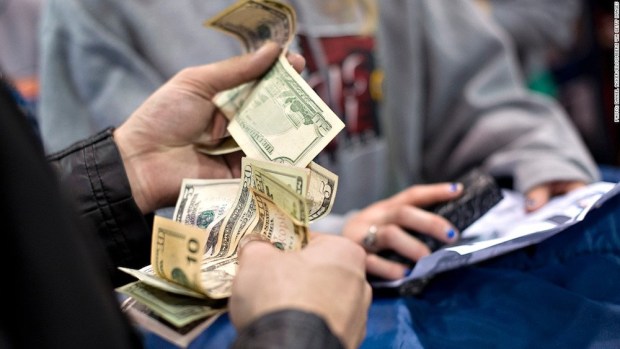US Consumer Confidence Dips But Consumer Spending Rises

The inconsistent start to 2017 from an economic perspective may be starting to even out some as the most recent consumer spending report indicated that consumer spending increased by the most it has all year in April.
Consumer spending is the single largest driver of the U.S. economy — and the slowdown during the first three months of the year slowed GDP growth to 1.2 percent during Q1. Yesterday, the Atlanta Fed said the stronger data helped its closely-followed GDP tracker to project second-quarter growth of a robust 3.8 percent.
“This affirms our view that the U.S. economy will reaccelerate after a winter lull and overall growth will remain firmly in the 2 percent range in the first half of the year,” Diane Swonk of DS Economics said of the Bureau of Economic Analysis data, which also showed solid gains in personal incomes.
Household expenditures saw their biggest tick up since December — discretionary spending was up at the fastest rate it has seen since in the last seven months.
And the U.S. rebound isn’t an international one-off; Japan and the Eurozone also show signs of growing economic potency.
The continued strength in results is widely expected to push the Fed to make their fourth increase in short-term interest rates since the end of the crisis. The U.S. central bank has signaled a quarter-point move is likely at its June meeting in two weeks.
“From the Fed’s perspective, the most important thing is that the economy is clearly bouncing back from the weak first quarter,” said Mickey Levy, an economist at Berenberg. “You are clearly seeing a rebound in consumer spending.”
The Fed, however, is not seeing all the lights flip to green, as it were, when it comes to its post-crisis recovery benchmarks. Though full employment is becoming closer to a reality in the economy, core inflation remains below the Fed’s 2 percent target. Fed chair Janet Yellen and her fellow rate-setters head into the June meeting confronted with these contradictory stories on the central bank’s two key goals.
“If the soft inflation data persist, that would be concerning and, ultimately, could lead me to reassess the appropriate path of policy,” noted Lael Brainard, a member of the Fed’s board of governors. Brainard had said scaling back monetary policy stimulus will probably be appropriate “soon.”
As for other strong signs in the economy — housing prices are on their fastest incline in 33 months, and consumer confidence is down month-to-month but remains higher than it was on the eve of the election. In Japan, the jobless rate is at 2.8 percent, its lowest in more than two decades, while retail sales increased by 3.2 percent year-on-year in April.
